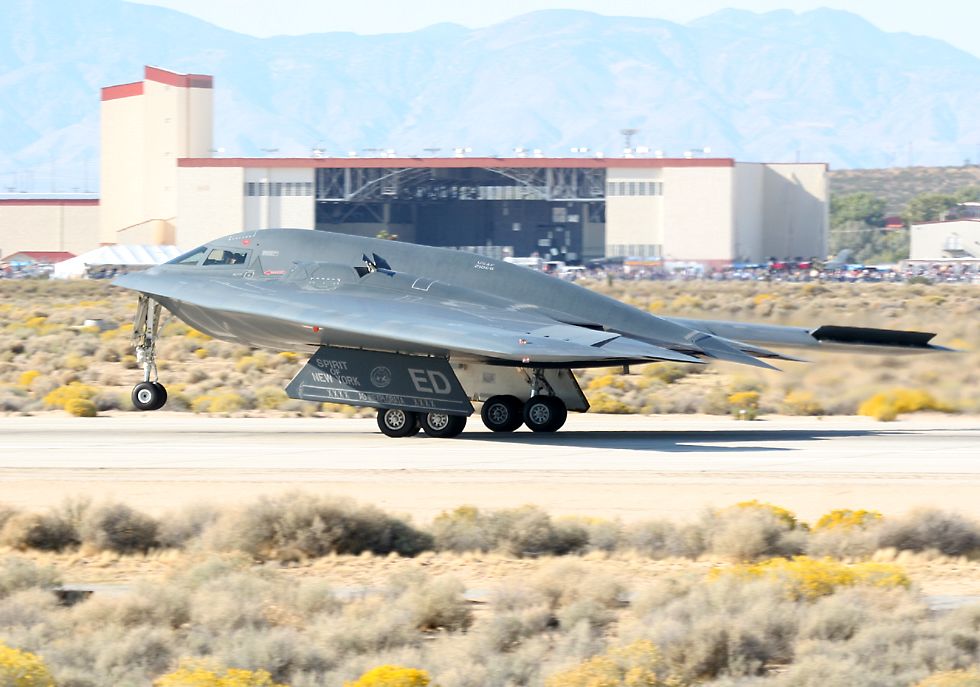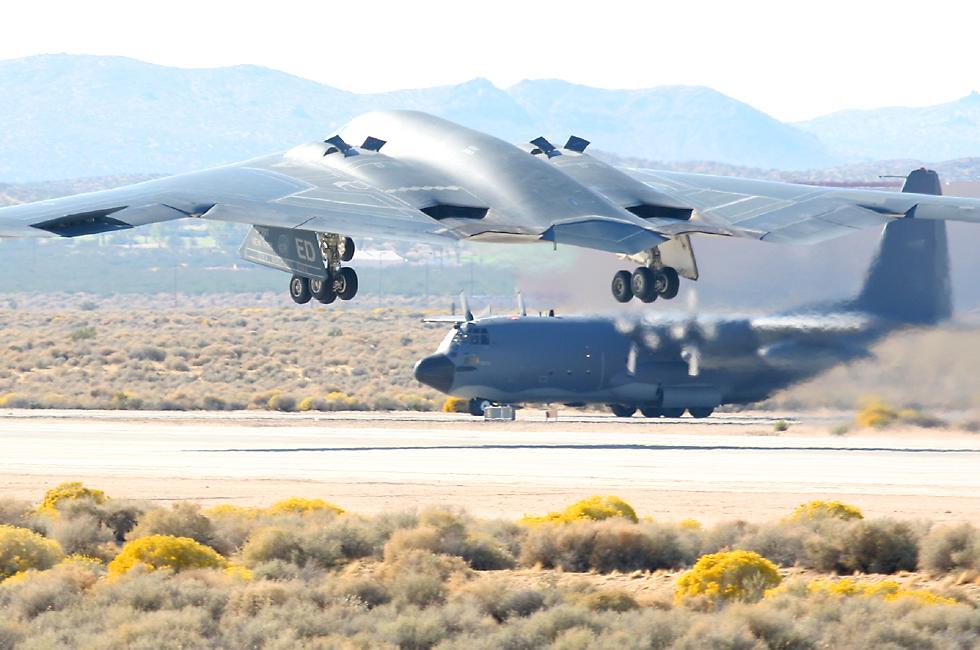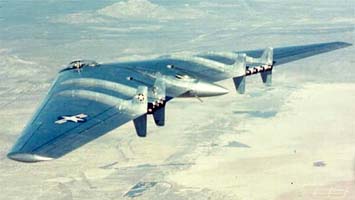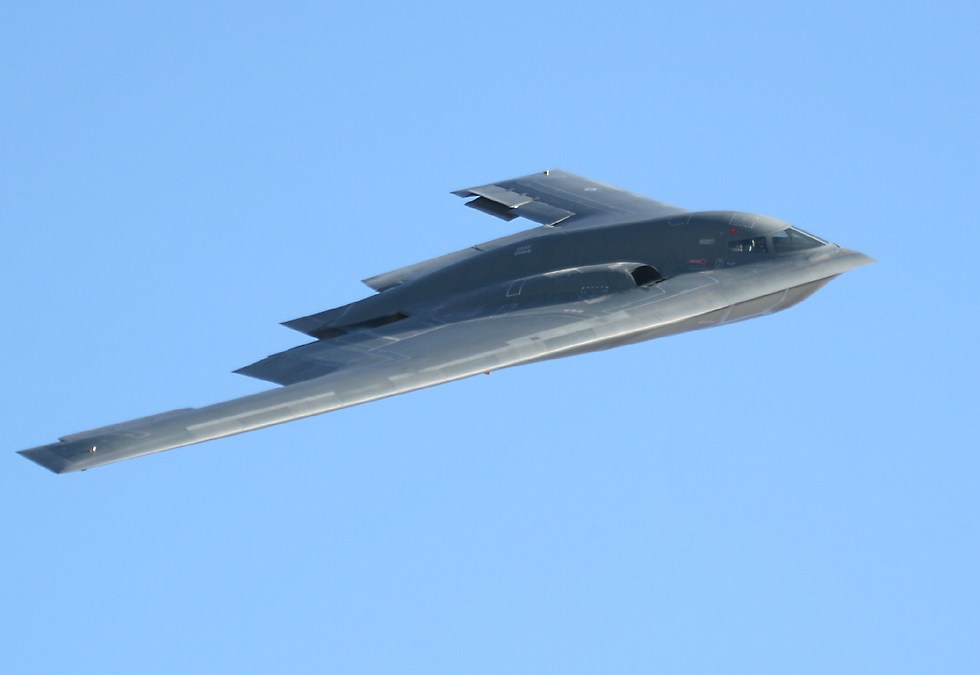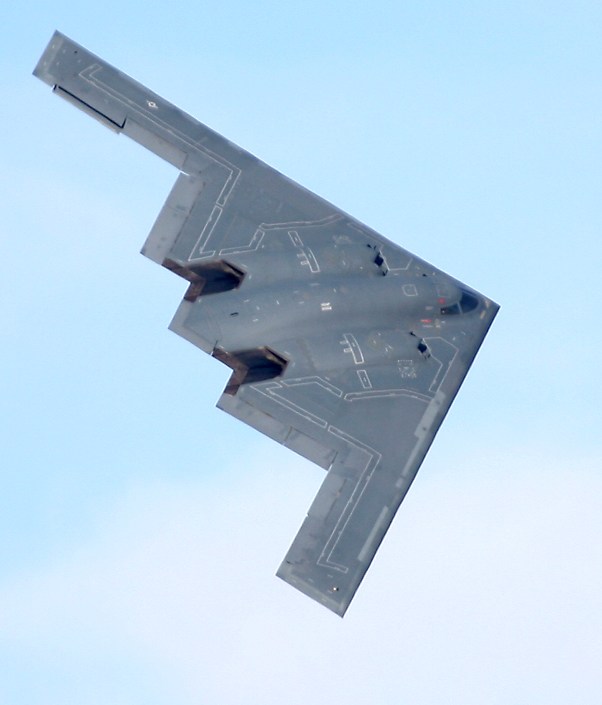B-2 Spirit at the 2005 Edwards AFB Airshow
|
It was disappointing when we heard over the radio scanner on Saturday that the B-2 Spirit display had been cancelled because of mechanical problems, especially since I'd heard that the Edwards show is one of the very few places where it's possible to see the B-2 banking at close range. To be honest, we'd been hearing its engines behind us for quite some time and we could see people working on it, so it didn't come as a total surprise when the cancellation came through. However, shortly afterwards there was the B-2 taxying out for its performance, and it turns out that the only problem had been a broken motor shaft for the crew entry ladder! In this photo, not only can you see the "stealth bomber", but on the other side of the field in the static display area you can see the F-117 "stealth fighter", which really should be the A-117 "stealth strike plane", especially now that a true stealth fighter in the form of the F-22 Raptor is in service. |
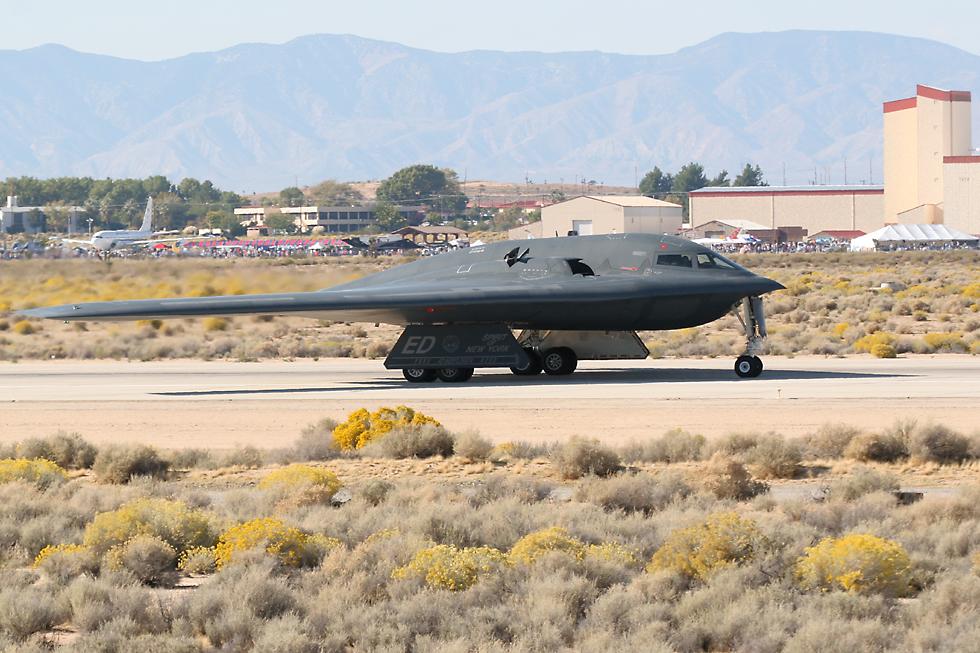 |
|
Here's the extraordinary beast on its takeoff run; with no vertical tail it looks completely other-worldly, but it actually flies much like any other more conventional aircraft. This one is called "The Spirit of New York", and is based here at Edwards rather than at Whiteman air force base in Missouri, which is the only operational base for them in the continental United States. You can see that they've put the Edwards "ED" tail code on the landing gear door, since there's no tail to put it on! |
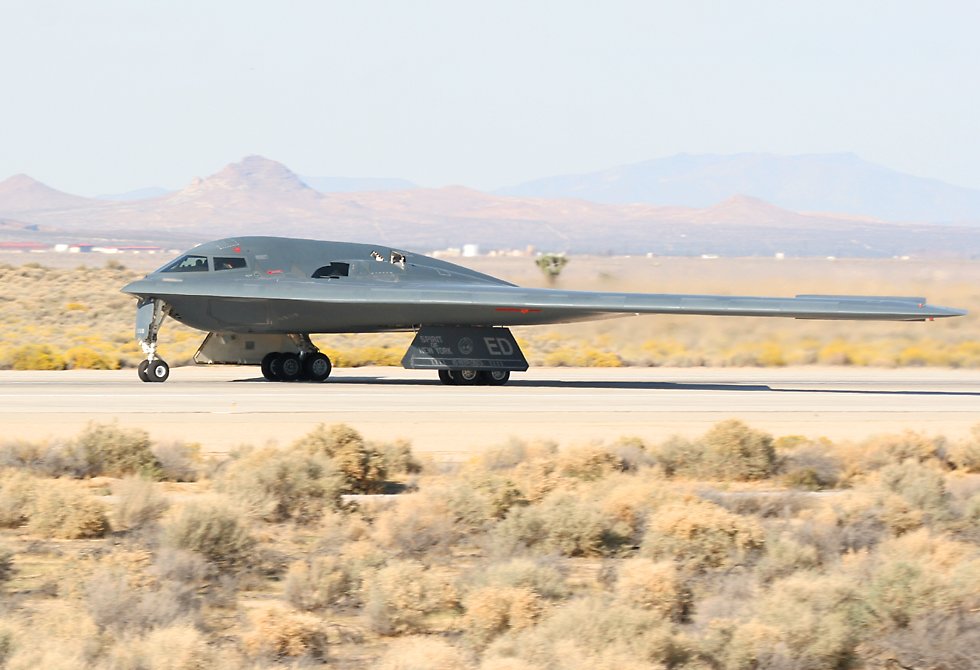 |
|
The four non-afterburning engines are buried within the wing. Apart from everything else, this makes the aircraft very quiet, it just whispers past you even at low altitude. |
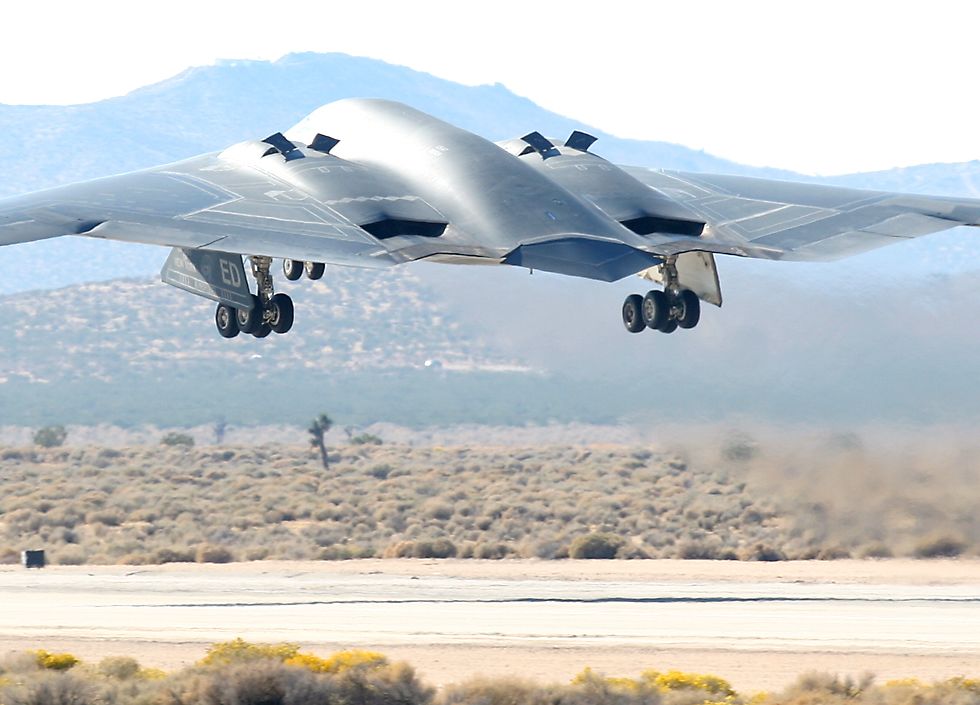
|
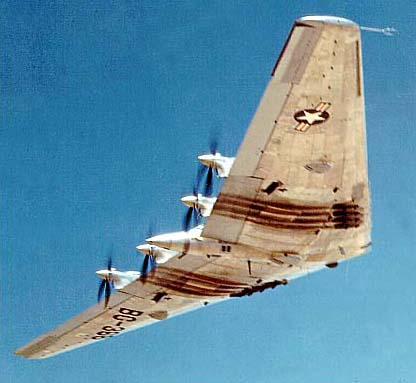 |
The B-2 might look futuristic, but the basic design isn't new at all, the same manufacturer Northrop did two very similar designs just after world war two, the propeller driven B-35 shown on the left and the jet driven B-49 on the right. |
|
|
As I mentioned, Edwards is just about the only airshow in the world where you'll actually see a B-2 doing a banking pass at a public display. The air force's preference for very tame demonstrations is largely due to the high cost of each aircraft - somewhere between $2.2 and $2.4 billion apiece, making it by far the most expensive plane in the world. This price tag is primarily due to the small number built, only 21 rather than the 132 which were originally planned. It's fortunate that any entered service at all, the cost of the programme and the reduced need for it in a post cold war era could have meant that it never got into operation - where would we aviation enthusiasts have been if that had happened! Still, it's sobering to think that this plane is actually worth about twice its weight in gold, a pretty penny if ever there was one! |
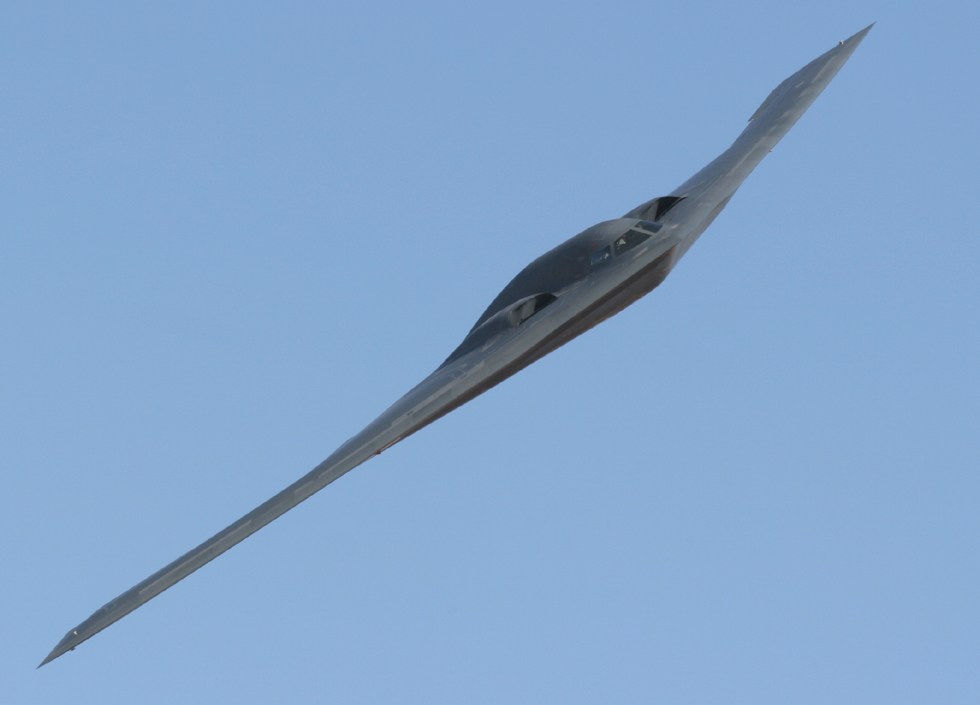 |
|
In this closeup view you can see an auxiliary inlet below and just in front of each of the engine inlets which removes the turbulent boundary layer air flow before it enters the engine. The removed air is then remixed with the exhaust gases to reduce the temperature signature from the engines and so decrease the stealth bomber's visibility to infra-red tracking equipment. |
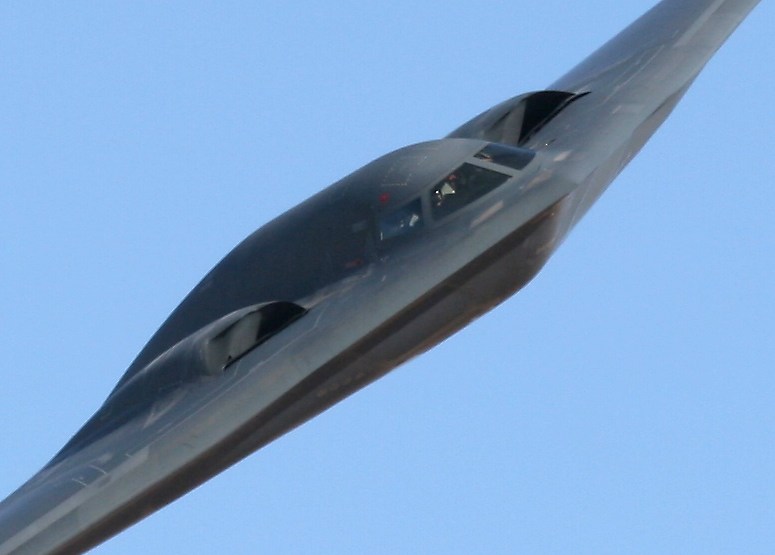 |
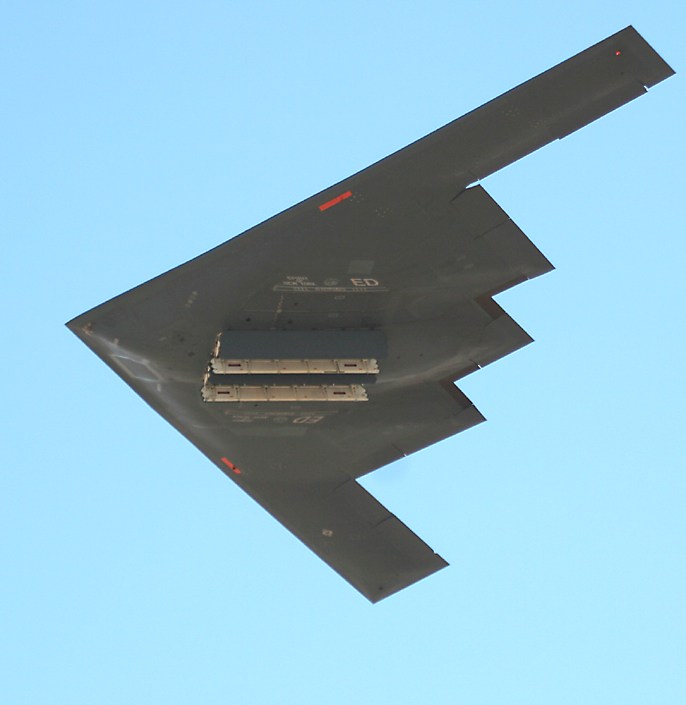
Here's something else you won't see at a regular B-2 display - a pass with the two bomb bay doors open. You can just make out the zig-zag panels at the front and rear of the doors which bounce radar energy away. Still, with the doors open the plane is more visible on radar, so the bombing systems are designed to minimize the amount of time they stay like this. This shot also shows one of the bright red navigation beacons lit up under the wing, allowing the aircraft to operate safely in regular airspace; in combat these beacons are withdrawn to make the plane stealthier. |
|
The B-2 was first used in combat in March of 1999 over Serbia, and was later deployed during operations in Afghanistan and Iraq. On some of these missions the B-2 left Missouri, bombed the target, flew to the US base on the small island of Diego Garcia in the Indian Ocean, and then a new crew was put on board to immediately fly a return mission back to Missouri. |
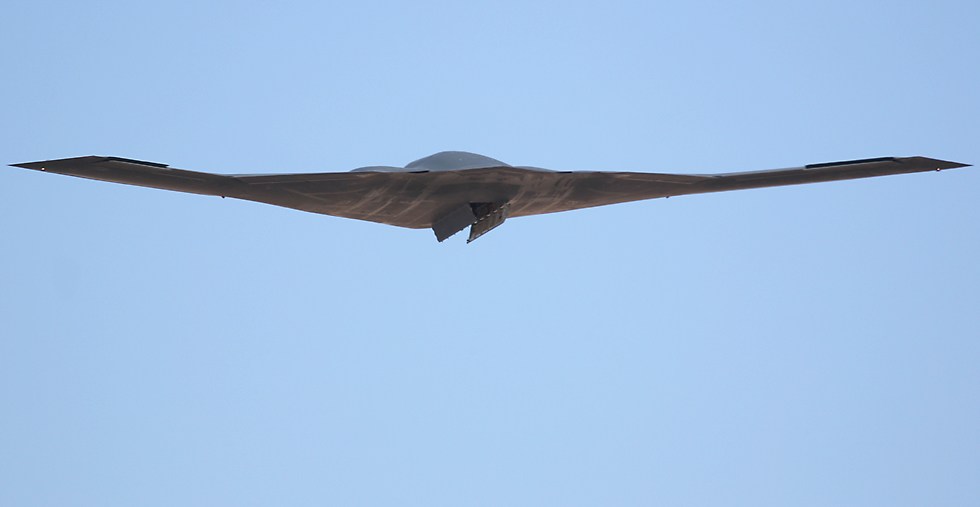 |
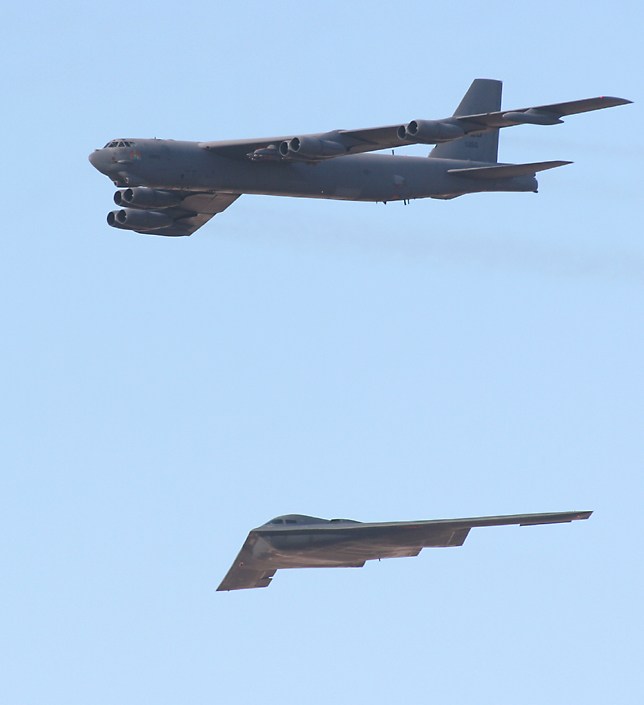
The old and the new flying together during the mass flyby at the end of the show, a 1990s B-2 Spirit with a 1950s B-52 Stratofortress. Despite its unrivalled ability to penetrate heavily monitored and defended airspace, the B-2 is actually inferior to the B-52 in a number of ways, especially in its bomb carrying ability - the B-2 can only take 40,000 pounds (18 tonnes) of weapons compared to the B-52's 70,000 pounds (32 tonnes). However, the Spirit has excellent range - 6500 miles (12000 kilometers) without refuelling, and it was sometimes flown on round trip bombing missions over Iraq from Missouri. These missions took over 30 hours, and apparently one flight of 50 hours was done, which certainly would have required in-flight refuelling. There are only two crew members and not many amenities on board, though apparently a chemical toilet and roll-up mattress are usually taken, and there are even reports of fold-up deck chairs being carried. |
|
This pass with lowered undercarriage is another thing which hasn't previously been seen at other public airshows. |
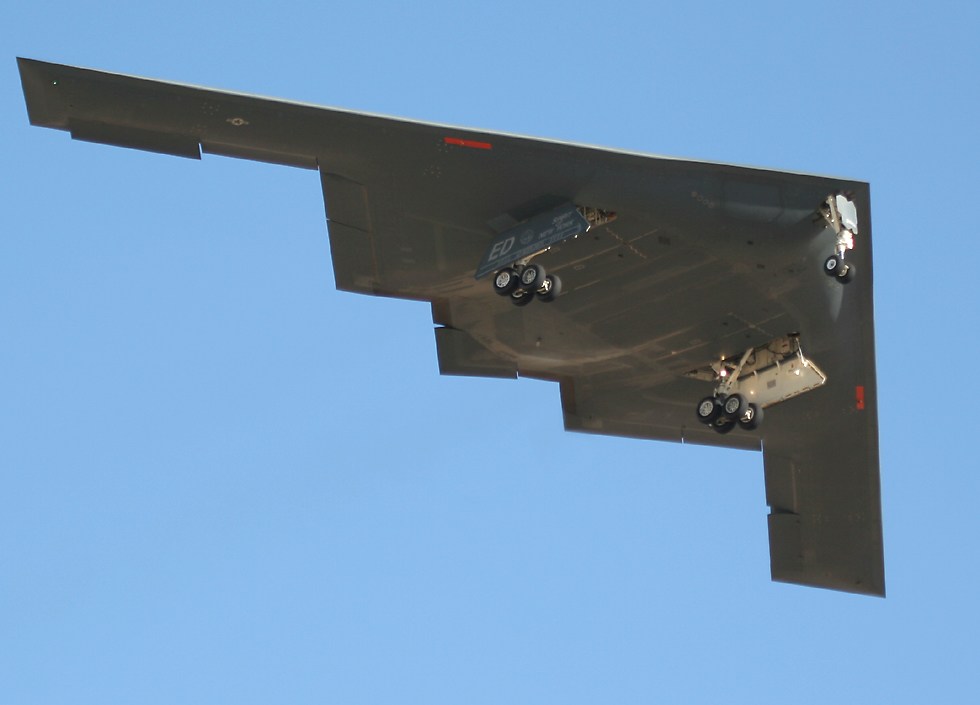 |
|
Flying wings are very efficient aerodynamically, with much less drag than ordinary aircraft. The B-2 likes to get into the air and is a little reluctant to come down, so the crews actually put some effort into forcing the plane on a downward trajectory when landing, much like naval aviators flying onto aircraft carriers. |
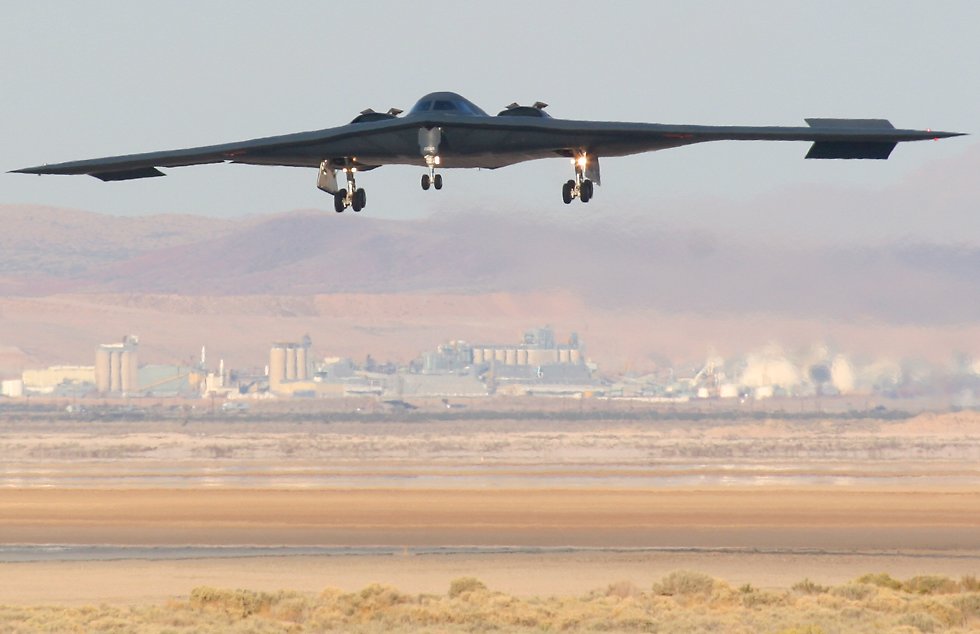 |
|
This angle shows off the unusual air intakes, which are mounted far back on top of the wing and have an unusual angled shape, all in order to reduce the radar cross section of the plane. Jet turbine compressor blades have a nasty tendency to "twinkle" on radar screens as they spin, so the air duct is "S" shaped so the blades aren't visible from any angle. On the F-117 Nighthawk the compressor blades are hidden by metal mesh at the front of the intakes, but this isn't an ideal solution since it impedes the airflow. |
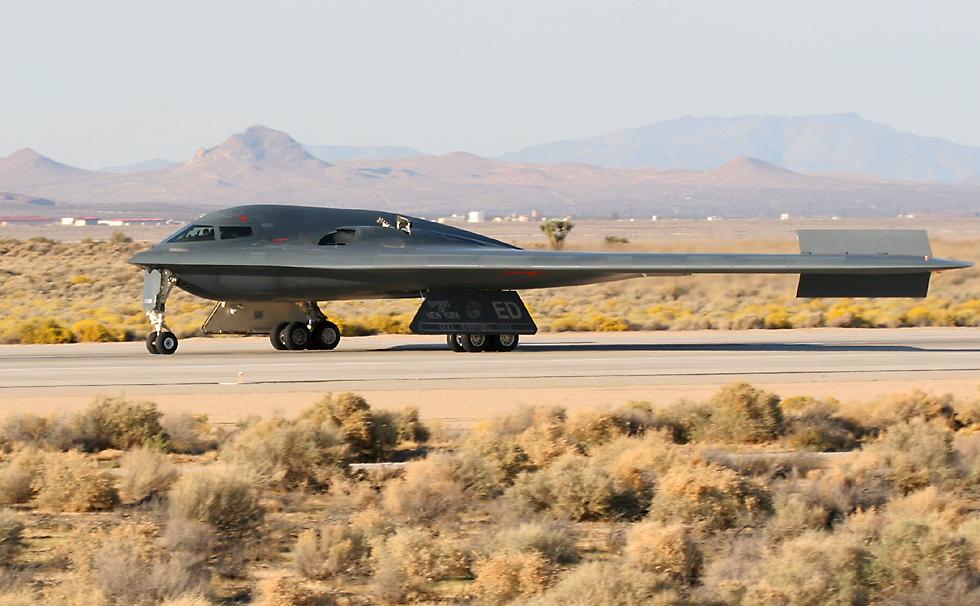 |
|
There's no drag chute, but one of the B-2's design criteria was the ability to operate from any airfield useable by a 727 airliner, so the rudders are used as air brakes to slow the aircraft down. This design feature was also used on Northrop's earlier flying wing bombers, and it's referred to as a "rudderon" or "deceleron" because the same panels which are deflected apart to decelerate the plane are also moved in tandem to act as rudders or ailerons. |
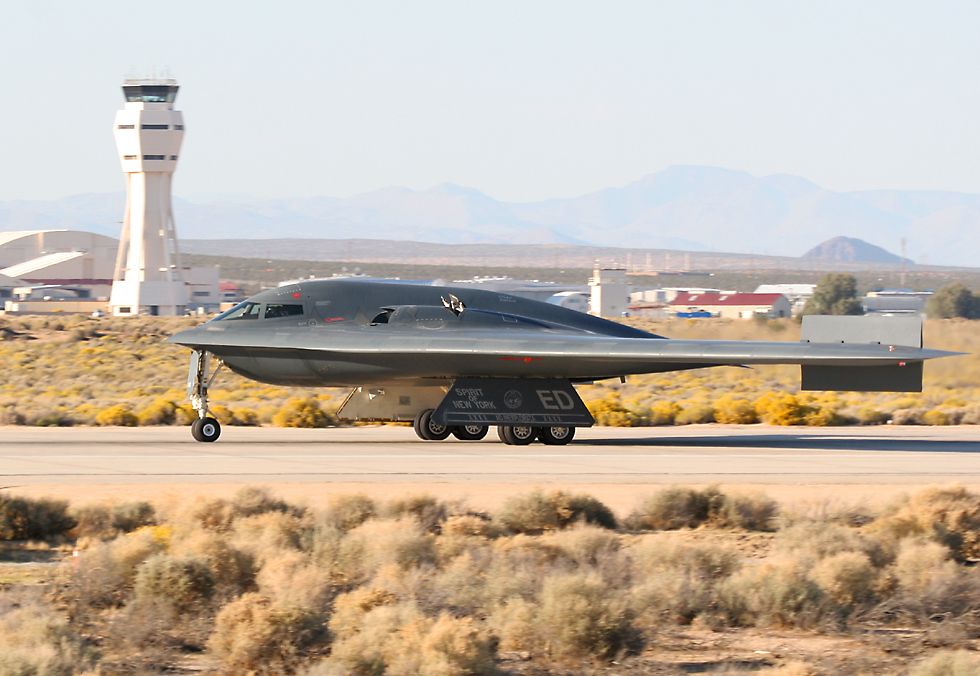 |
